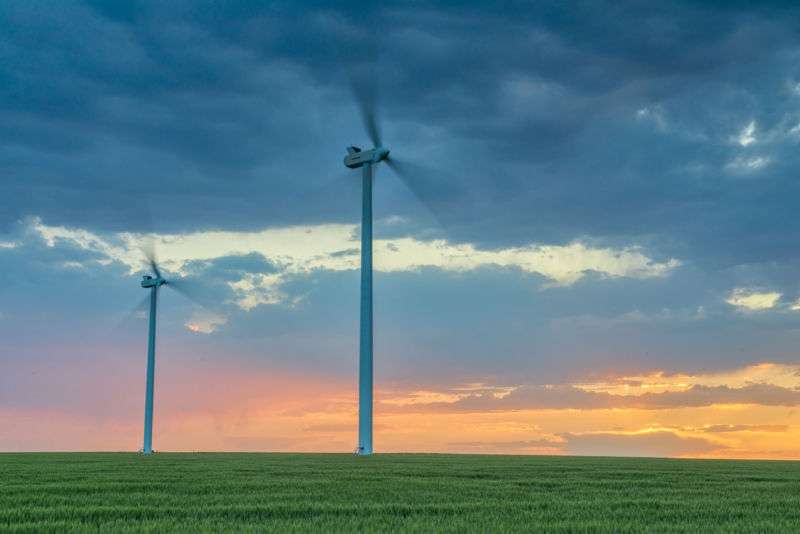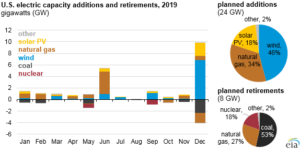
After a boom year for new natural gas plants, renewables set to retake the lead

In 2019, more renewable energy will be added to the grid than fossil fuel-based energy, according to estimates from the Energy Information Administration (EIA). That had been the trend between 2013 and 2017, but last year new natural gas-fired power plants outpaced renewable additions to the grid. As a result, US carbon emissions increased, notably from the power sector, despite the rapid retirement of coal plants and a growing consciousness about the necessity of low-carbon energy.
EIA expects 2019 to be a more modest year for new energy capacity compared to 2018, with only 24 gigawatts (GW) of total capacity additions predicted for 2019 compared to the 34GW of capacity additions predicted for 2018. In 2018, EIA predicted that 21GW of natural gas plants would come online, with roughly 11GW of new renewables coming online, making 2018 the first year since 2013 in which renewables didn’t make up the bulk of the new capacity added in the US.
A recent report from the Rhodium Group shows that actual installations in 2018 track with the EIA’s 2018 estimate: between January and October 2018, 14.9GW of natural gas capacity were added to the US grid, while only 7.9GW of solar and wind capacity were added. More power plants were likely turned on between October and December, and the ratio of natural gas to renewable installations is comparable.
What will 2019 look like?
2019 will look quite different, according to the EIA. Wind power alone, at 10.9GW, is currently scheduled to come online before the end of the year, likely spurred by the phase-out of an Investment Tax Credit (ITC) on newly built large wind projects that expires at the end of 2019. (Small wind projects, with turbines smaller than 100kW, can still take advantage of the ITC for some years to come.) In addition, 4.3GW of solar photovoltaics are set to come online in 2019.
Only 34 percent, or roughly 8GW, of planned capacity on the US grid will be natural gas, a marked decrease from last year.
Still, that may be cold comfort considering that any additions of fossil fuel capacity to the grid will make it harder to reach global climate goals.
Attrition won’t necessarily help either. Just 2.2GW of natural gas-fired capacity is set to be retired in 2019, along with 1.5GW of (carbon-free) nuclear and 4.5GW of coal-fired capacity. (For coal, 2019 might shape up to be a not-so-bad year, compared to 2018 when 13.7GW of coal-fired capacity were retired.)
All of the natural gas units that are set to retire in 2019 came online in the 1950s and 1960s, the EIA says. Two nuclear reactors are set to retire this year, one at the Pilgrim Nuclear Power Station in Massachusetts and the other at the Three Mile Island Nuclear Power Station in Pennsylvania (its last remaining unit). Half of the total coal capacity set to retire this year comes from the Navajo power plant in Arizona, which has failed to find a buyer since its potential shutdown was announced.





